The novel coronavirus (COVID-19) pandemic is now rife around the world. Face-masks are becoming increasingly scarce, and sewing factories are overburdened. Are you planning to make your own DIY mask for you and your family because you cannot find a place to buy masks? Are you having the following questions?
- If forced to make our own mask, what material is best suited to make a mask?
- I want to make a cloth mask but don’t know where to start.
- How can I make a mask when my sewing skill is ZERO?
Let’s decode these questions together through the article below.
What material is best suited to make a mask?
Before going to find what material is best suited to make a mask, let’s figure out how big the COVID-19 is.
How big the coronavirus is?
Scientists have already used electron microscopes to measure how big the coronavirus is, and they found out that Coronavirus particles are spheres with diameters of approximately 125 nm – 140 nm (0.125 microns – 0.140 microns), smaller than PM 2.5 fine particles.
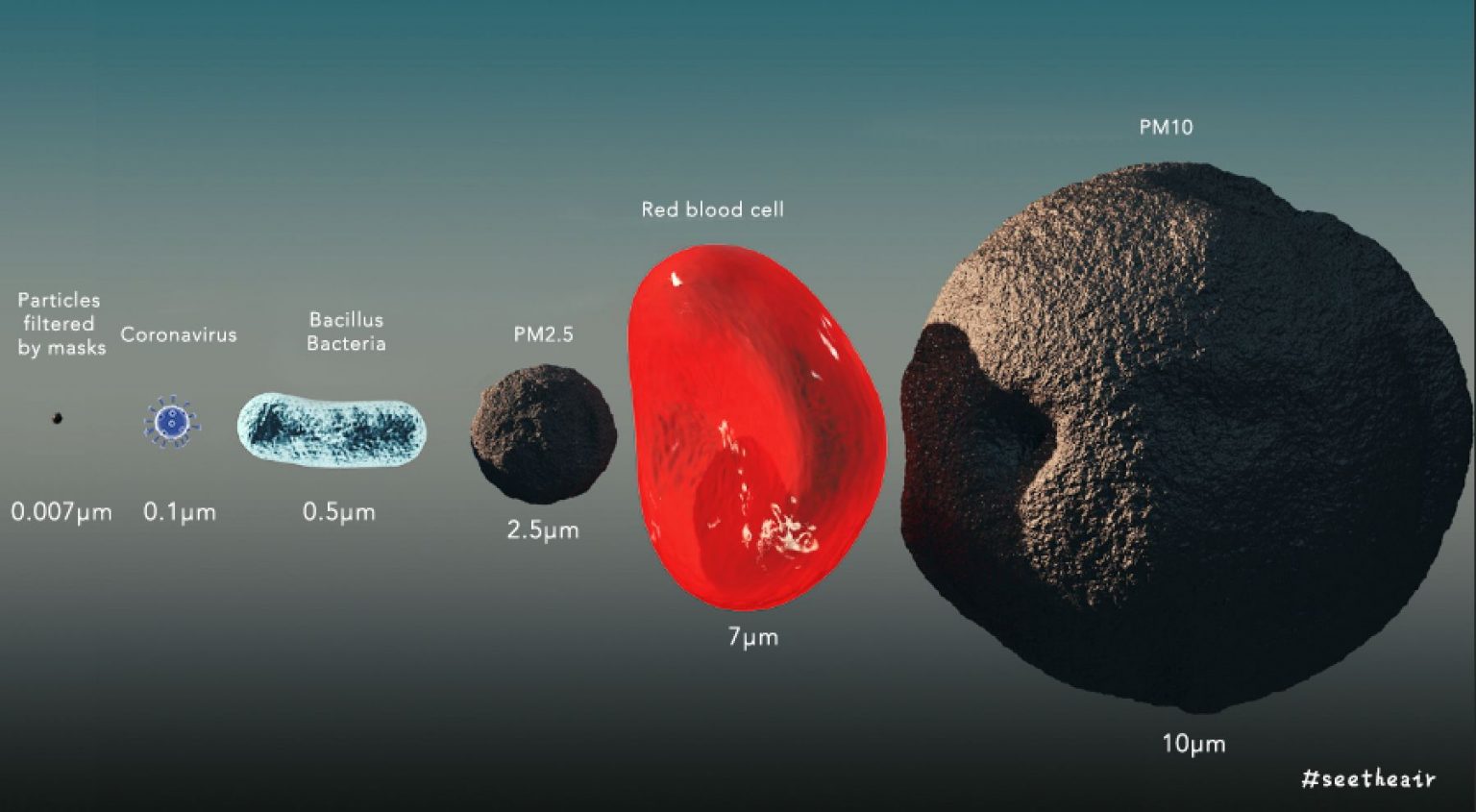
Source: The New England Journal of Medicine
Household materials’ effectiveness against COVID-19 virus
Researchers at Cambridge University have tested a range of household materials available in your family. They tested the materials to see how well they could capture virus-sized particles compared to a surgical mask.
In the experiment, they shot Bacteriophage MS virus (0.023micron), which is 5 times smaller than the COVID-19 virus (0.125 micron – 0.140 micron) at the speed of a sneeze on common household materials to see how well they cope with the virus. The question “Which material is best used to make cloth masks?” will be answered in the results table below.
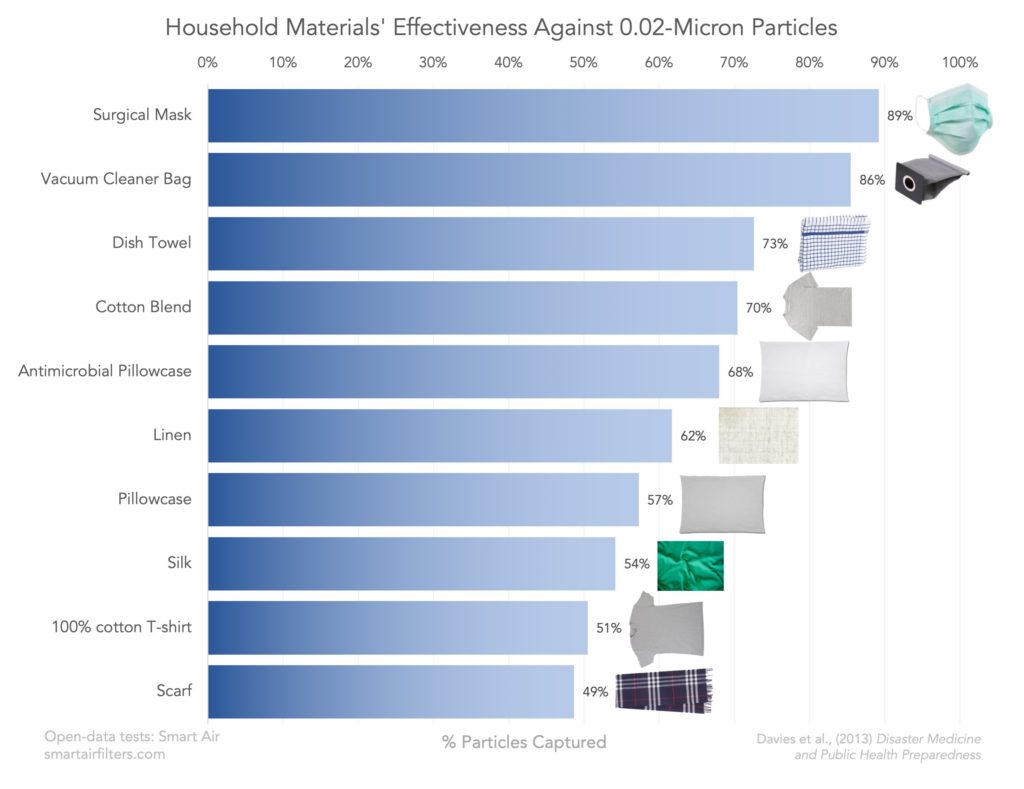
Source: Smart Air Filters
We can see that the surgical masks are specialized, so they work best to capture 89% of bacteria. Other fabrics such as dust filter can capture 86% of the 0.02-micron virus, dishtowels (using microfiber cloths – Microfiber) are 73%, cotton blends are 70% and 100% cotton shirts are 51%.
However, the level of breathability is an important determinant of how long you can wear the mask. That will affect your mask’s level of virus protection. If a mask has poor air circulation, you will tend to wear less, and vice versa.
Below is a table that evaluates the difficulty of breathing the materials that you use to make masks (note that 0% is normal breathing, negative% indicates difficulty breathing, positive% indicates the level respirator breathability):
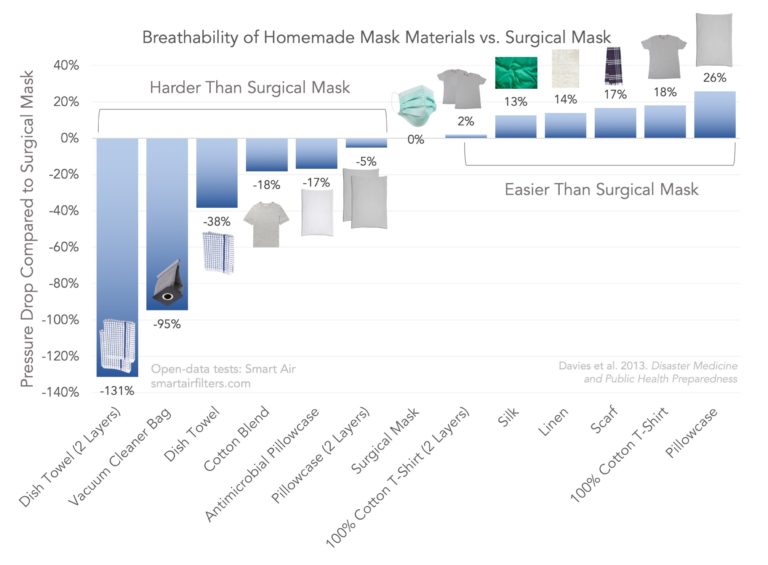
The most suitable materials to make cloth masks
As a result, these data show that the best choices for making DIY masks are cotton t-shirts, pillowcases, linen or other cotton materials. Let’s consider choosing the most suitable fabric to make a comfortable mask.
Please note that if the material is too thick, you will not be able to wear it for long. Because it will be difficult to breathe and affecting the prevention of the virus. Next is the tutorial of making a mask at home in only 10 seconds without sewing.
Make a DIY mask in only 10 seconds
On March 2020, the Hokkaido TV channel (北海道テレビ) announcer Mori Sayaka has shown us the easiest way to make a DIY mask within only 10 seconds.
This method doesn’t require you to prepare several things like sewing thread, sewing machine, scissors, cloth, etc or even any special skills. The only things you need are a handkerchief (or a 25x25cm piece of cloth made by materials that we recommended on the paragraph above) and 2 rubber bands.
Please note that the material to make a handmade mask can easily find in your home such as kitchen paper, hand towel, unused cloths/t-shirt, etc.
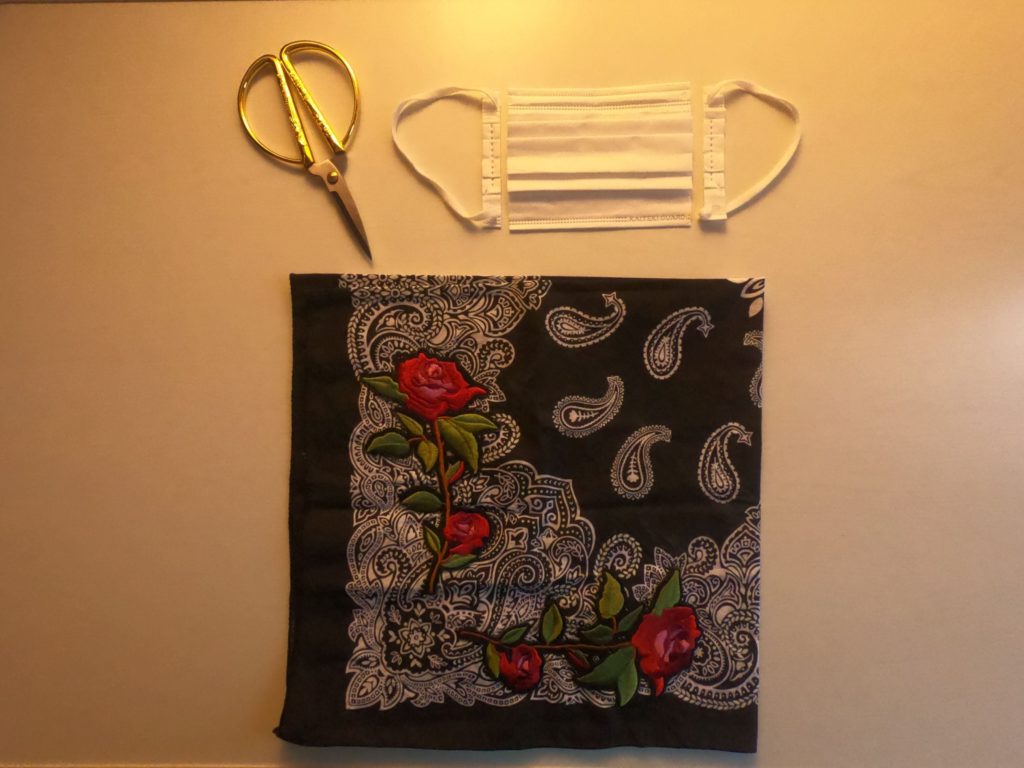
Since there isn’t any elastic band at this moment, we will cut the strap of the used mask as rubber bands. You can also use hair bands or anything that is elastic for this part.
Let’s move to the detailed steps!
STEP 1: Fold the handkerchief into 3 equal parts
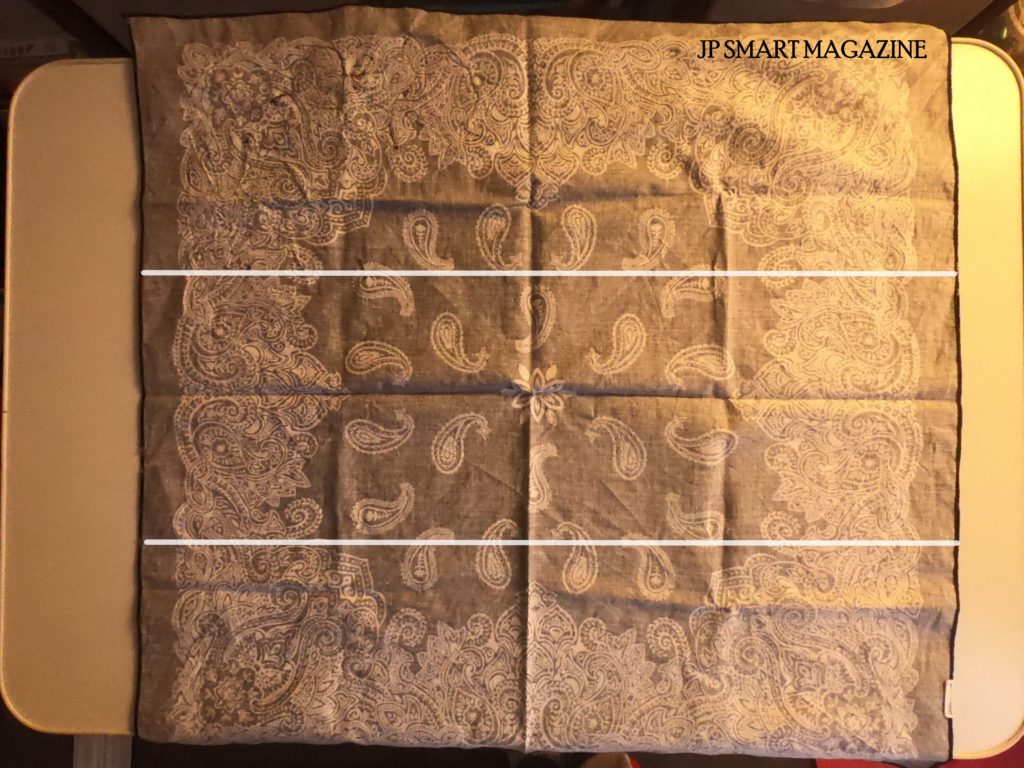
Divide the handkerchief into 3 equal parts.
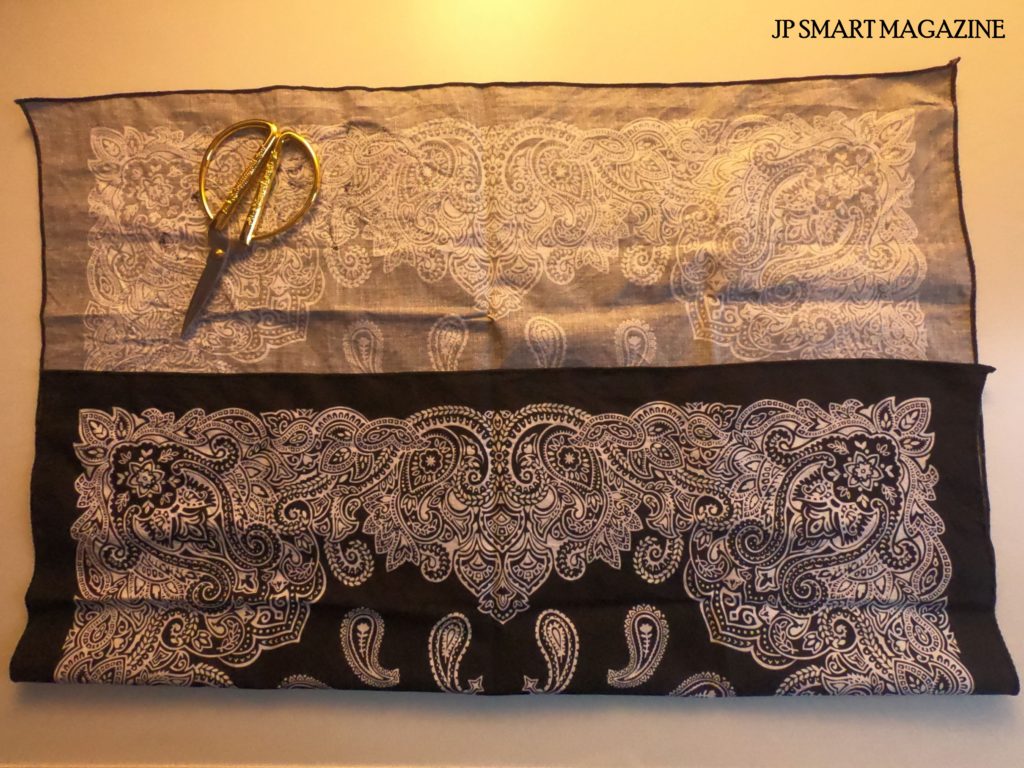
Then fold it up and down.
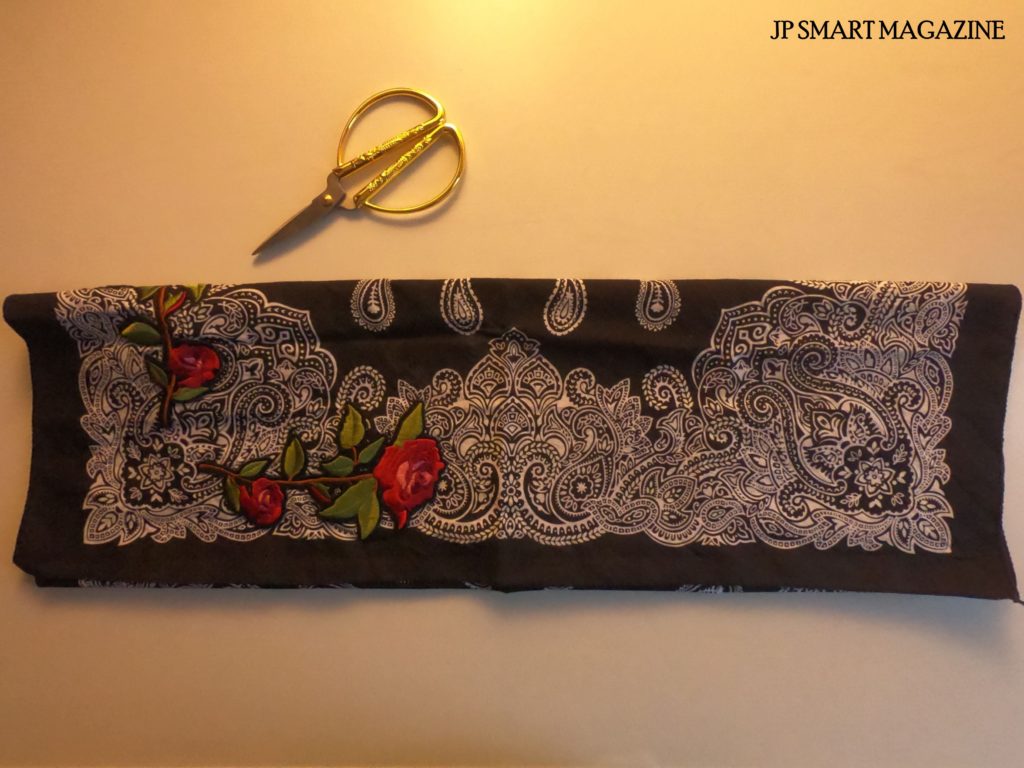
Here it is!
STEP 2: Put a fold in the middle
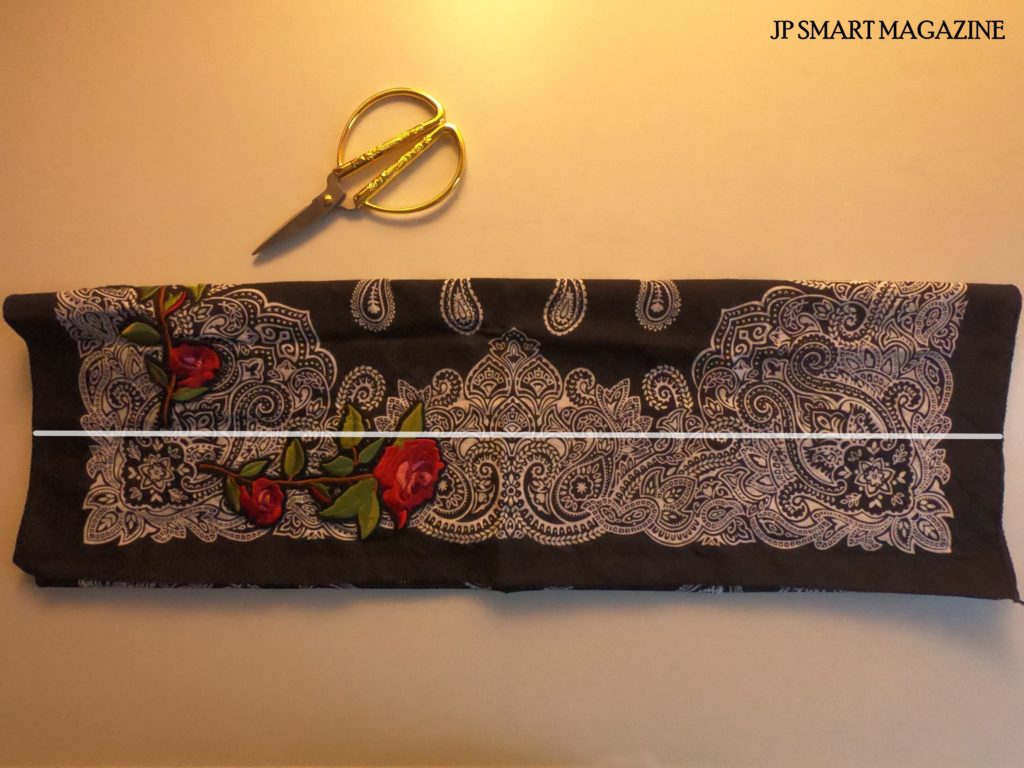
Divide the trifold piece into 2 equal parts.
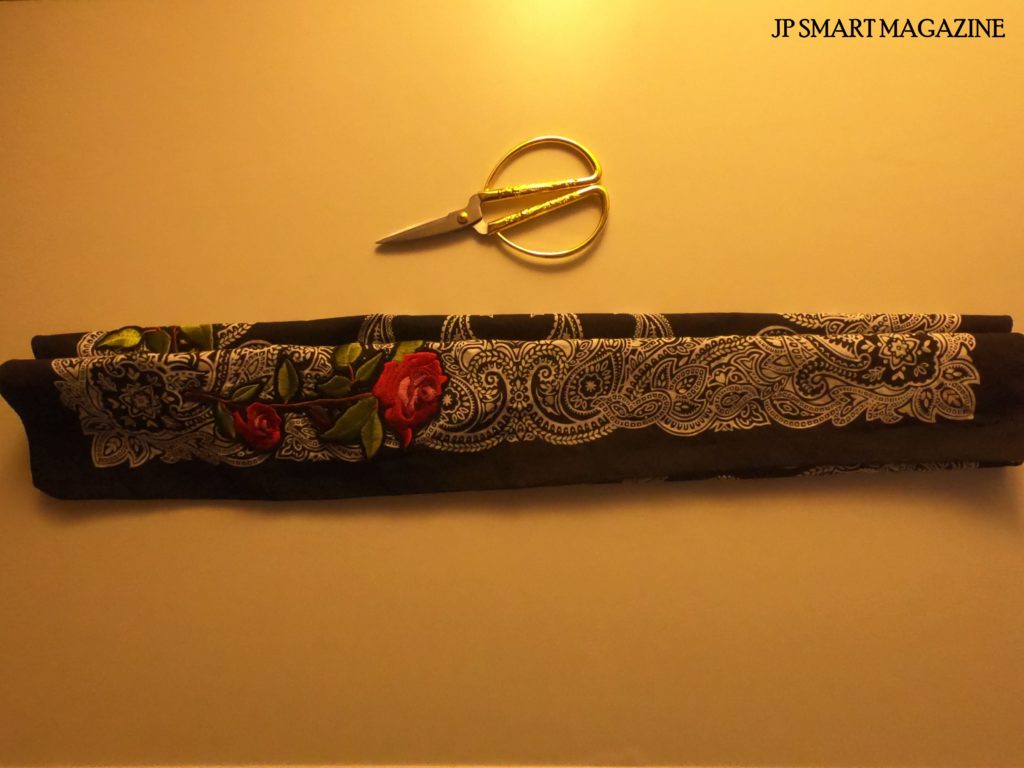
Put a fold in the middle. And adjust it to fit the distance from your nose to your chin.
STEP 3: Fold the handkerchief into 3 parts again
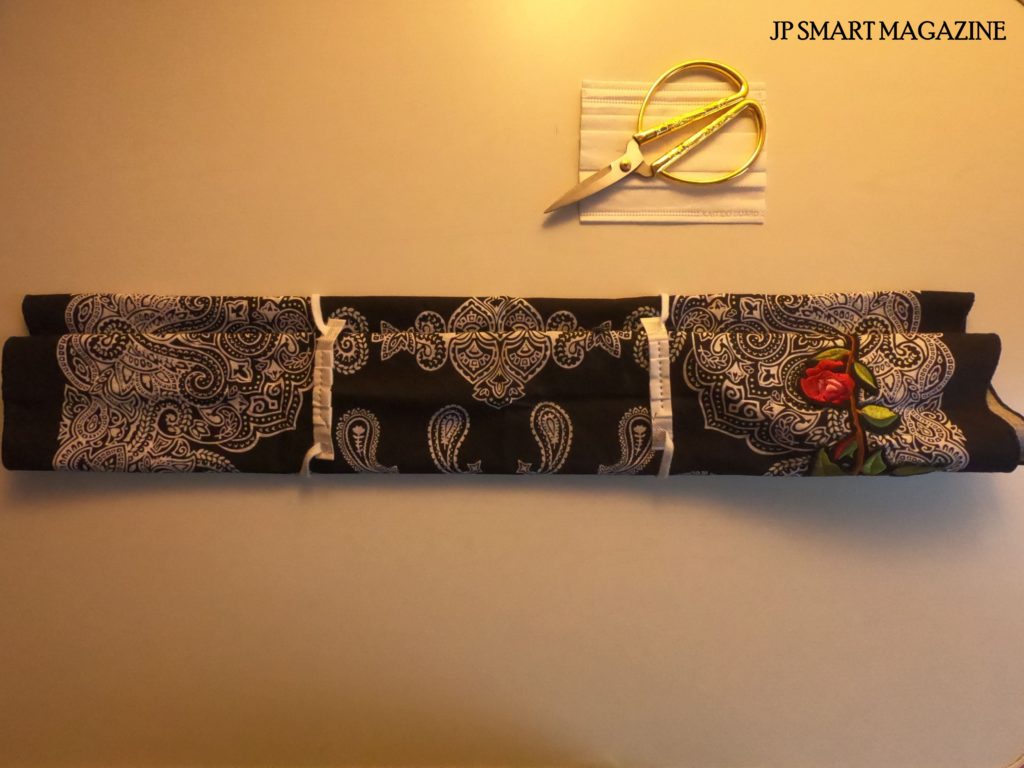
Fold the handkerchief into 3 parts again by rubber bands.
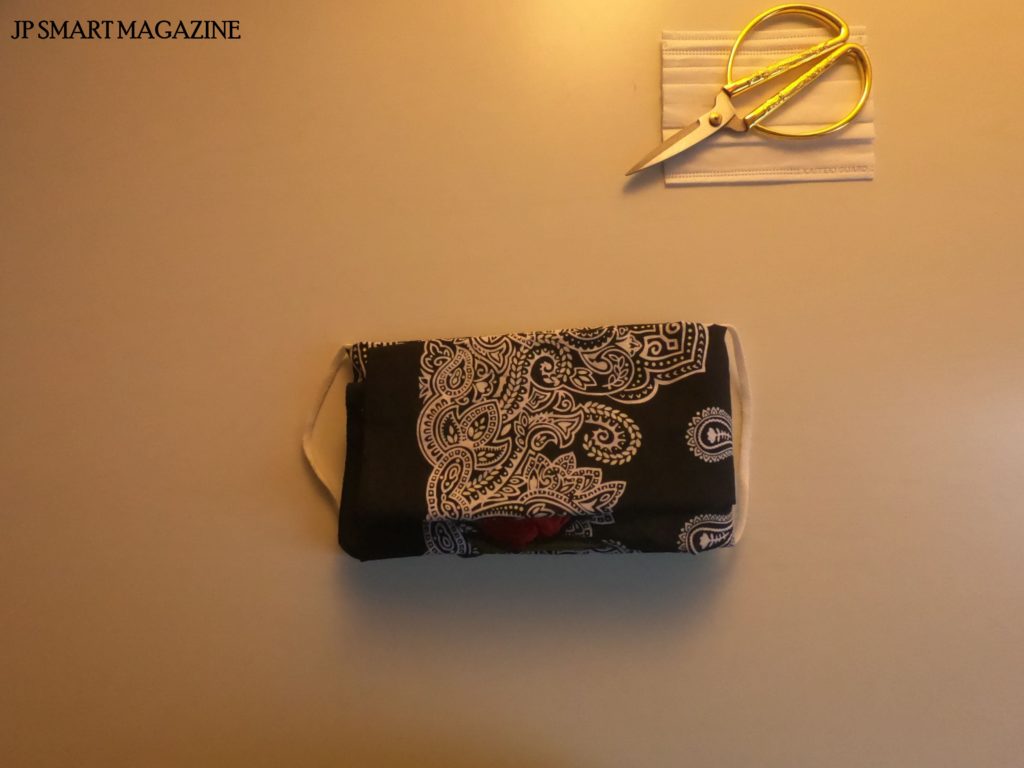
Then fold it from two sides and adjust it to fit the width of your face.
STEP 4: Ta-da! Your handmade mask is ready to use.
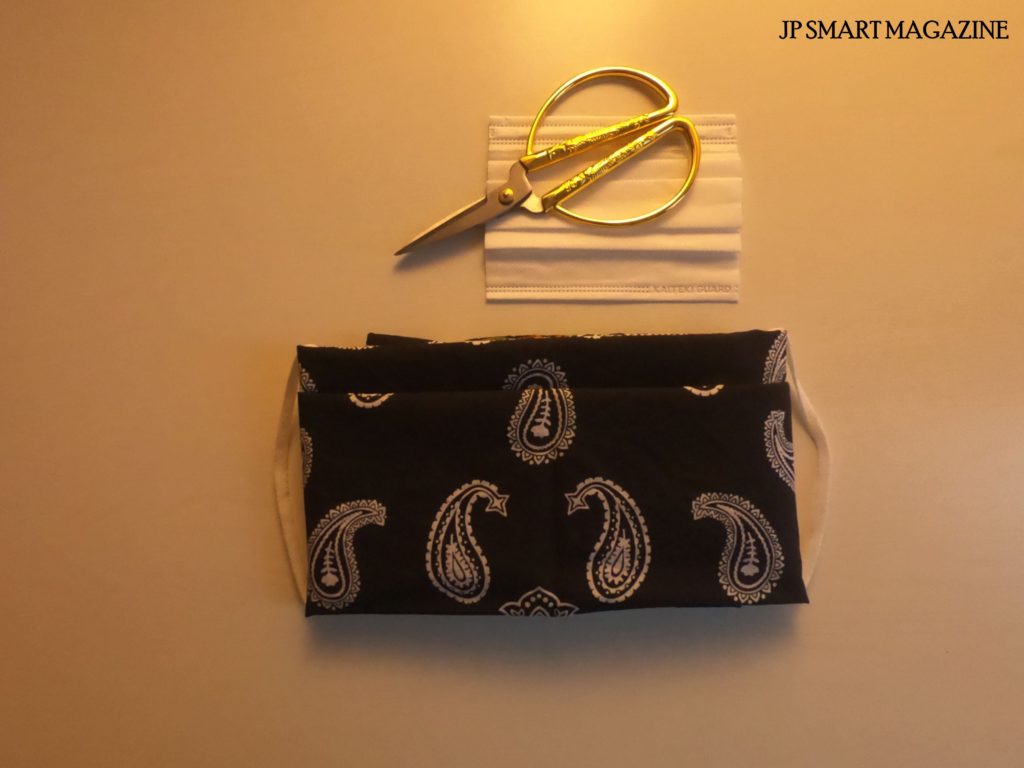
It is ready! The comfort, as well as the breathability, are better than expected.

We spent one hour using this DIY mask indoors, but the elastic is still strong and the mask is well fixed. If you walk around outside in this season, it feels good enough to block pollen.
Moreover, It’s so nice to be able to return your handmade mask to the original handkerchief for washing or when it is no longer needed, isn’t it?
Conclusion
Coronavirus particles are spheres with diameters of approximately 125 nm – 140 nm (0.125 microns – 0.140 microns), smaller than PM 2.5 fine particles. So the best choices for making DIY masks are cotton t-shirts, pillowcases, linen or other cotton materials. Let’s consider choosing the most suitable fabric to make a comfortable mask.
The skill we introduced in this article is estimated at the elementary school level, so everyone can make it in a blink.
If you think it looks good, try making it and don’t forget to share this tip with your friends and your family members. Let’s overcome this pandemic together!


